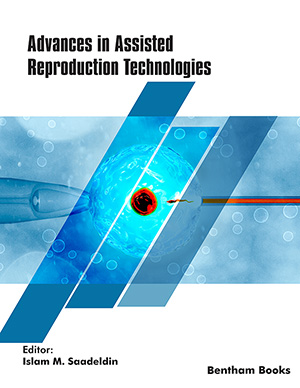Abstract
Rapid global modernization, urbanization, industrialization, and frequent natural processes release toxic heavy metals into the environment such as mercury (Hg), lead (Pb), cadmium (Cd), arsenic (As) and selenium (Se). In the present scenario, soil and water ecosystems are the main environmental alarms. The remediation of contaminated soils and water ecosystems with appropriate approaches is urgently needed. Physical remediation strategies are conventional, expensive, and nonspecific. In contrast, phytoremediation is an eco-friendly and fast-growing approach that is accomplished due to the high uptake of toxic heavy metals from the environment. Since plants are slow-growing and have low biomass they urgently need to be bioengineered for high biomass. On the other hand, biotechnology helps identify and isolate gene coding for heavy metal resistance tolerance in plants. Moreover, molecular cloning and the manifestation of heavy metal accumulator genes and other associated genes & enzymes can facilitate the remediation rates, which will make the process with a large-scale application that will improve the phytoremediation process. This review highlights the biotechnological methods and strategies for the remediation of heavy metals and metalloid containment from environments. Furthermore, this review also comprises the improvements and implications of phytoremediation as well as their operations and applications to reduce toxic pollutants from environments and to improvise phytoremediation efficiency to tolerate various heavy metal pollutants highlighting future challenges.
Keywords: Heavy metal, phytoremediation, pollutants, hyperaccumulator, molecular cloning, bioengineer.
[http://dx.doi.org/10.1016/j.scitotenv.2018.07.103] [PMID: 30248873]
[http://dx.doi.org/10.1289/ehp.782237] [PMID: 648490]
[http://dx.doi.org/10.1201/b12786]
[PMID: 15387079]
[http://dx.doi.org/10.1007/s13201-017-0607-4]
[http://dx.doi.org/10.1016/j.jtemb.2005.02.010] [PMID: 16325528]
[http://dx.doi.org/10.1155/2014/640754]
[http://dx.doi.org/10.1007/s42452-020-2599-1]
[http://dx.doi.org/10.1080/15226514.2020.1807906]
[http://dx.doi.org/10.3390/ijms161226183] [PMID: 26690422]
[http://dx.doi.org/10.1016/j.envpol.2011.07.008] [PMID: 21835516]
[http://dx.doi.org/10.1016/j.aoas.2018.05.007]
[http://dx.doi.org/10.1016/j.ecoenv.2017.11.006] [PMID: 29182968]
[http://dx.doi.org/10.1080/15226514.2018.1488815] [PMID: 30652486]
[http://dx.doi.org/10.1046/j.1469-8137.2002.00506.x] [PMID: 33873276]
[http://dx.doi.org/10.1016/j.soilbio.2006.04.045]
[http://dx.doi.org/10.1021/es061432y] [PMID: 17144312]
[http://dx.doi.org/10.1023/A:1022580325301]
[http://dx.doi.org/10.1007/s00425-004-1392-5] [PMID: 15517354]
[http://dx.doi.org/10.17221/3188-PSE]
[http://dx.doi.org/10.1007/BF00009933]
[http://dx.doi.org/10.2113/EEG-2123]
[http://dx.doi.org/10.1007/s11033-012-1598-8] [PMID: 22362314]
[http://dx.doi.org/10.1016/j.envexpbot.2015.10.005]
[http://dx.doi.org/10.1039/c8mt00300a] [PMID: 30664146]
[http://dx.doi.org/10.1016/j.jhazmat.2010.09.101] [PMID: 20970921]
[http://dx.doi.org/10.1016/j.plantsci.2005.08.013]
[http://dx.doi.org/10.1016/j.envexpbot.2009.11.006]
[http://dx.doi.org/10.1111/nph.15105] [PMID: 29561072]
[http://dx.doi.org/10.1016/j.ecoleng.2015.07.001]
[http://dx.doi.org/10.1155/2018/4864365]
[http://dx.doi.org/10.1016/S0167-7799(00)01534-1] [PMID: 11164556]
[http://dx.doi.org/10.1007/1-4020-4225-6_8]
[http://dx.doi.org/10.1081/ESE-120003599] [PMID: 12049127]
[http://dx.doi.org/10.1128/aem.63.6.2442-2445.1997] [PMID: 9172366]
[http://dx.doi.org/10.1007/s00299-011-1013-2] [PMID: 21327392]
[http://dx.doi.org/10.1104/pp.119.1.73] [PMID: 9880348]
[http://dx.doi.org/10.1016/j.jhazmat.2011.11.008] [PMID: 22119299]
[http://dx.doi.org/10.1007/978-3-319-14526-6_18]
[http://dx.doi.org/10.1016/j.chnaes.2010.10.001]
[http://dx.doi.org/10.1016/j.ecoenv.2008.11.002] [PMID: 19171381]
[http://dx.doi.org/10.1016/j.chemosphere.2006.02.016] [PMID: 16564071]
[http://dx.doi.org/10.1007/978-981-10-5744-1_7]
[http://dx.doi.org/10.1016/j.biochi.2006.07.003] [PMID: 16914250]
[http://dx.doi.org/10.1007/s13762-013-0299-8]
[http://dx.doi.org/10.1002/ldr.2288]
[http://dx.doi.org/10.1016/j.chemosphere.2016.12.116] [PMID: 28061428]
[http://dx.doi.org/10.1016/j.chemosphere.2013.01.075] [PMID: 23466085]
[http://dx.doi.org/10.1007/s11270-015-2550-z]
[http://dx.doi.org/10.3389/fpls.2020.00359] [PMID: 32425957]
[PMID: 11019460]
[http://dx.doi.org/10.1021/es00007a747] [PMID: 22667744]
[http://dx.doi.org/10.3923/rjet.2011.162.179]
[http://dx.doi.org/10.1016/j.jenvman.2018.03.077] [PMID: 29597108]
[http://dx.doi.org/10.1007/s10661-019-7528-7] [PMID: 31177337]
[http://dx.doi.org/10.30638/eemj.2012.010]
[http://dx.doi.org/10.1016/S0013-7952(00)00101-0]
[http://dx.doi.org/10.1134/S1064229313050153]
[http://dx.doi.org/10.1016/j.biotechadv.2013.11.011] [PMID: 24333465]
[http://dx.doi.org/10.3390/ijerph14121504] [PMID: 29207531]
[http://dx.doi.org/10.1007/978-3-642-35564-6_5]
[http://dx.doi.org/10.1007/s11270-007-9401-5]
[http://dx.doi.org/10.1016/j.jenvman.2012.04.002] [PMID: 22542973]
[http://dx.doi.org/10.1080/07388550490493627] [PMID: 15493528]
[http://dx.doi.org/10.1038/msb4100073]
[http://dx.doi.org/10.1016/j.biotechadv.2008.09.003] [PMID: 18950697]
[http://dx.doi.org/10.1016/j.plantsci.2010.08.016] [PMID: 21421358]
[http://dx.doi.org/10.1007/s002530100631] [PMID: 11525612]


























